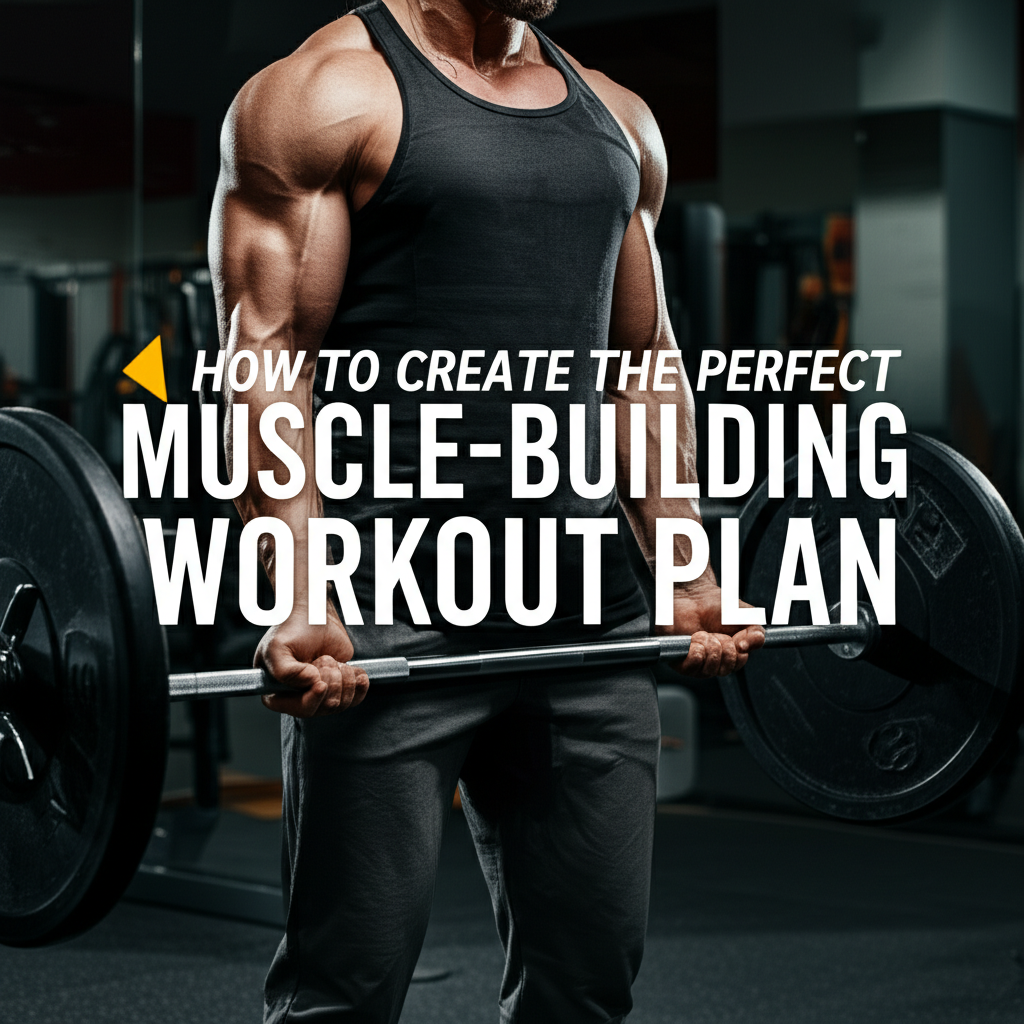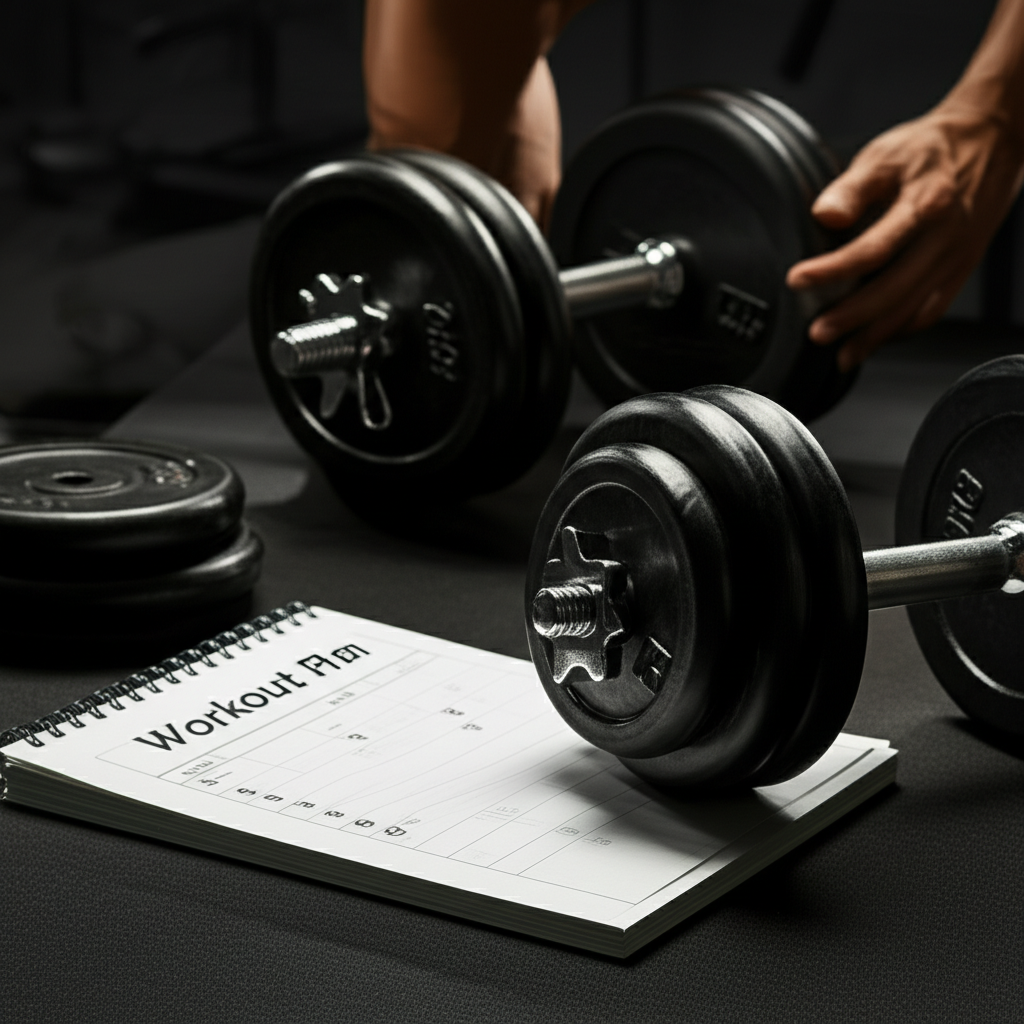How to Create the Perfect Muscle-Building Workout Plan

Building muscle requires a smart workout plan. This guide shows beginners how to create the perfect muscle-building workout plan step-by-step, focusing on progressive overload, proper nutrition, and rest for optimal gains.
Key Takeaways

- Prioritize compound exercises for efficient muscle growth.
- Implement progressive overload to constantly challenge muscles.
- Balance training with adequate nutrition and rest.
- Listen to your body to prevent injuries.
- Be consistent for sustainable results.
Are you ready to build a stronger, more muscular physique but feel overwhelmed by all the workout advice out there? Creating the perfect muscle-building workout plan might seem complicated, but it doesn’t have to be. Many beginners fall into the trap of doing random exercises, hoping for the best, which often leads to frustration and minimal progress. The truth is, a well-structured plan is your secret weapon. This guide will break down exactly how to create a muscle-building workout plan that’s effective, sustainable, and tailored to you.
Understanding the Fundamentals of Muscle Growth
Before diving into creating your plan, let’s quickly touch on what makes muscles grow. The primary driver is a process called hypertrophy. This happens when you subject your muscle fibers to stress – typically through resistance training – that causes microscopic tears. Your body then repairs these tears, making the muscle fibers stronger and larger than before. This adaptation is your body’s way of preparing to handle that stress better next time.
Key factors influencing muscle growth include:
- Mechanical Tension: The most important factor, created by lifting challenging weights through a full range of motion.
- Muscle Damage: The micro-tears mentioned earlier.
- Metabolic Stress: The “pump” you feel, often achieved through higher repetitions and shorter rest periods.
To maximize these factors, you need a plan that consistently challenges your muscles without overtraining, combined with the right fuel and recovery. Understanding this foundation helps us build a workout plan that works.
Step 1: Define Your Goals and Assess Your Starting Point
The “perfect” muscle-building workout plan is personal. What works for a seasoned athlete might not be ideal for someone just starting. So, the first step is to get clear on what you want to achieve and where you’re starting from.
Setting SMART Goals
Your goals should be:
- Specific: Instead of “get bigger,” aim for “increase bicep circumference by 1 inch” or “add 10 pounds to my bench press.”
- Measurable: How will you track progress?
- Achievable: Set realistic targets for your experience level and time commitment.
- Relevant: Ensure your goals align with your overall fitness aspirations.
- Time-bound: Give yourself deadlines (e.g., “in 3 months”).
For beginners, focusing on mastering proper form and building a solid strength base is crucial before aiming for extreme size gains. Understand that significant muscle growth takes time and consistent effort. The National Strength and Conditioning Association (NSCA) emphasizes that strength and conditioning programs should be individualized to meet the specific needs and goals of the participant.
Assessing Your Current Fitness Level
Be honest about your experience:
- Beginner: You have little to no experience with structured resistance training, or you’re returning after a long break.
- Intermediate: You’ve been training consistently for 6 months to 2 years, have a good grasp of basic exercises, and have seen noticeable progress.
- Advanced: You’ve been training consistently for over 2 years, have plateaued in progress, and require advanced training techniques.
Your plan will differ significantly based on this assessment. For example, a beginner might benefit from full-body workouts three times a week, while an intermediate might need a split routine focusing on different muscle groups on different days.
Step 2: Choose Your Training Split
A training split refers to how you divide your workouts throughout the week, targeting different muscle groups on different days. The best split depends on your experience level, recovery capacity, and how many days per week you can commit to training.
Full-Body Workout (Ideal for Beginners)
Frequency: 2-3 days per week (e.g., Monday, Wednesday, Friday).
Description: You work all major muscle groups in each session. This is excellent for beginners as it:
- Allows for frequent practice of fundamental movements, improving technique.
- Stimulates muscle growth frequently throughout the week.
- Provides ample recovery time between sessions (at least one rest day).
Example Structure: Include exercises for legs, chest, back, shoulders, and arms in each workout. Prioritize compound movements.
Upper/Lower Body Split
Frequency: 4 days per week (e.g., Mon: Upper, Tue: Lower, Thu: Upper, Fri: Lower).
Description: Divides training into sessions focused on the upper body and sessions focused on the lower body. This split allows for more volume per muscle group per session than a full-body approach, while still providing good recovery.
Push/Pull/Legs (PPL) Split
Frequency: 3-6 days per week (e.g., PPL, rest, PPL, rest; or PPLPPL, rest).
Description: This popular split groups muscles by movement patterns:
- Push Day: Chest, shoulders, triceps (movements involving pushing away from the body).
- Pull Day: Back, biceps (movements involving pulling towards the body).
- Leg Day: Quads, hamstrings, glutes, calves.
This split is effective for intermediate to advanced lifters as it allows for high intensity and volume for specific muscle groups.
Body Part Split (Bro Split)
Frequency: 5-6 days per week (e.g., Chest, Back, Legs, Shoulders, Arms, rest).
Description: Each day is dedicated to one or two specific muscle groups. While popular, this split is often less optimal for beginners because muscle groups are only stimulated once per week, which may not be frequent enough for rapid muscle adaptation. It’
